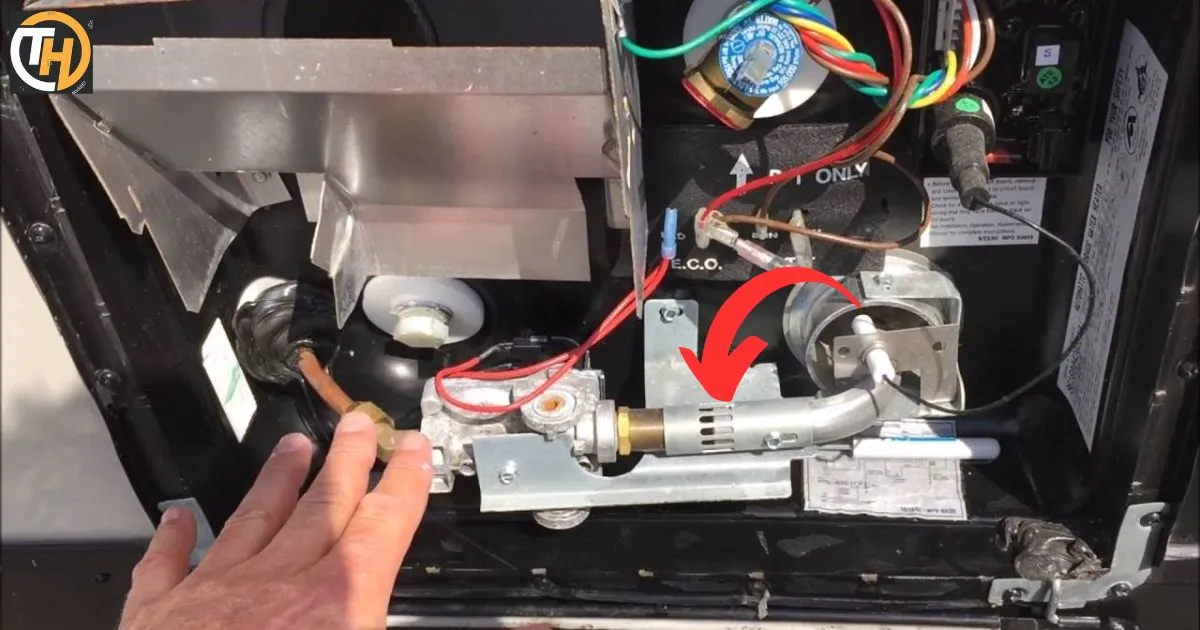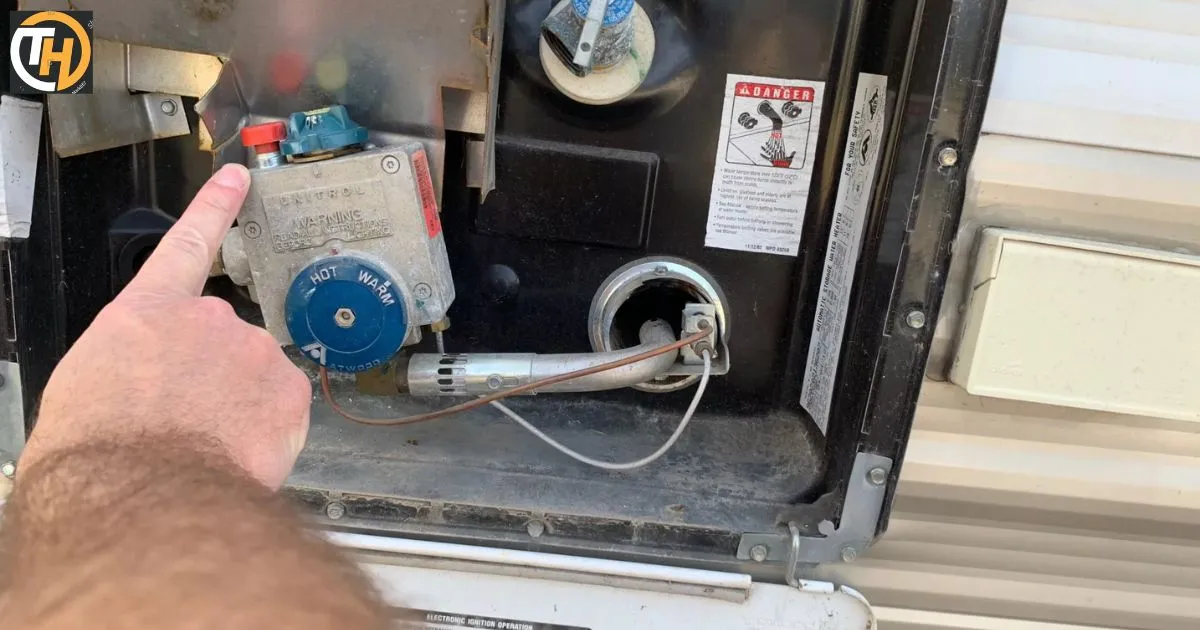To make sure your RV hot water heater igniter is working correctly, you need to test it periodically. The RV hot water heater igniter is a critical component of your RV’s water heating system, responsible for igniting the fuel source, typically propane, used to heat the water in your RV. Without a properly functioning igniter, you’ll be left without hot water, which can be a significant inconvenience during your travels.
Imagine being out camping in your RV, ready to take a warm shower after a long day of outdoor activities, only to find out that your hot water isn’t working. It’s a situation no one wants to find themselves in. Testing your RV hot water heater igniter can help you avoid such scenarios and ensure you always have access to hot water.
In the following sections, we will guide you through the steps to test your RV hot water heater igniter. This process is relatively straightforward and can be done without the need for professional help. However, it’s important to follow the instructions carefully to ensure the safety and longevity of your water heater.
Types of RV Hot Water Heaters
There are several types of water heaters commonly used in recreational vehicles (RVs), each with its own advantages and considerations. Here are the main types of RV water heaters:
- Tankless Water Heaters
- Tankless or on-demand water heaters heat water as it flows through the unit, eliminating the need for a storage tank.
- They are energy-efficient and provide an endless supply of hot water.
- Compact design saves space in your RV.
- Tank Water Heaters
- These are similar to traditional home water heaters, with a storage tank that holds and heats a specific amount of water.
- They provide a steady supply of hot water but can run out if used excessively.
- Tank water heaters are typically less energy-efficient and take up more space.
- Electric Water Heaters
- Electric RV water heaters use electricity to heat the water.
- They are efficient when connected to shore power but can drain your battery quickly when boondocking.
- Propane Water Heaters
- Propane water heaters use propane gas to heat the water, making them suitable for boondocking when electricity is limited.
- They are energy-efficient and provide hot water even when not connected to shore power.
- Hybrid Water Heaters
- Hybrid models combine electric and propane heating to provide efficient water heating options for RVs.
- They can automatically switch between power sources based on availability.
- Heat Exchange Water Heaters
- These water heaters use the heat produced by the RV’s engine to warm the water while driving.
- They are an energy-efficient option for those who frequently travel.
- Combi Water Heaters
- Combi water heaters combine the functions of a water heater and a space heater in one unit.
- They save space and are ideal for smaller RVs.
Each type has its advantages and considerations, so it’s essential to weigh your options and select the one that best suits your RV lifestyle.
Understanding the RV Hot Water Heater Igniter
A Closer Look at the Igniter

The RV hot water heater igniter is a small yet mighty component that plays a pivotal role in your RV’s water heating system. It’s the matchstick of your hot water dreams, creating the spark that ignites the gas and heats the water in your RV’s tank. Without it, you’d be facing chilly showers and less-than-ideal water temperatures.
Signs of Igniter Troubles
Before we dive into testing, it’s crucial to recognize the signs that your RV’s hot water heater igniter might be on the fritz. Identifying these issues early can save you from unexpected inconveniences during your travels. So, what are these telltale signs?
- No Hot Water: The most glaring sign is, of course, no hot water when you expect it.
- Clicking Serenade: If you’re treated to a continuous clicking symphony when you try to ignite the water heater, it’s a clear hint that your igniter might be the culprit.
- Gas Odor: A whiff of propane or gas when the water heater is in use? That’s a sign that the igniter might not be doing its job correctly.
- Flame Flicker: If the flame consistently extinguishes shortly after ignition, it suggests the igniter may not be functioning optimally.
Now that you know what to look out for let’s gear up and get ready to put your RV’s hot water heater igniter to the test.
Preparation and Safety: Gearing Up for the Spark Show
The Essential Toolkit
Before you start, you’ll need a few tools to ensure a safe and successful test:
- Safety Gear: Safety first! Ensure you have safety glasses and gloves to protect your eyes and hands.
- Screwdriver: You may need this to access the igniter and related components.
- Multimeter: A multimeter will help you measure electrical continuity and ensure the igniter is receiving power.
- Long Lighter: To manually light the pilot if your RV has one.
Safety First
When dealing with gas and electrical components, safety is paramount. Here are some crucial safety measures to consider before you embark on the testing journey:
- Turn off the gas: Always turn off the gas supply to the water heater before testing.
- Switch Off Power: Disconnect the power supply to prevent electrical accidents.
- Ventilation: Ensure there’s proper ventilation in the area to avoid the buildup of gas.
- Before testing, check for any gas leaks using a gas leak detector or soapy water.
- Consult your RV’s user manual for specific safety guidelines related to your water heater model.
Now that we’ve donned our safety gear and checked off all the safety measures, let’s dive into the step-by-step process of testing your RV’s hot water heater igniter.
Step-by-Step Igniter Test: Let’s Spark It Up
Access the Igniter
The first step is to access the igniter. It’s often located near the burner assembly of your water heater. Use your screwdriver to carefully remove any access panels or covers, granting you a clear view of the igniter.
Turn on the Heater
Now, it’s time to turn on the water heater. This allows the igniter to receive the necessary signals and attempt ignition. If your RV has a pilot light, this is the moment when it should ignite the pilot.
Observe the Igniter
As the water heater attempts to ignite, observe the igniter. You’re looking for signs of life! If it’s working correctly, the igniter should produce a spark or a flame. This spark or flame is essential to ignite the gas and start the heating process.
Use the Multimeter
If your igniter isn’t sparking or lighting as expected, it’s time to bring in the multimeter. Set it to measure electrical continuity and carefully test the igniter’s electrical connections. This step will help you determine whether the igniter is receiving power.
Manually Ignite
If the RV hot water heater igniter fails to spark or light, you can try a manual ignition as follows: Use a long lighter to cautiously ignite the gas if your RV’s water heater has a pilot light. If the pilot light ignites, the problem might be related to the igniter itself.
Troubleshoot as Needed
Should your tests reveal an issue with the igniter, don’t fret. It might be a simple fix, like a loose connection or a faulty igniter. However, if the problem persists, it’s a sign that it’s time to call in a professional for further diagnosis and repair.
here’s a table summarizing the key points and descriptions from the article:
| Step | Description |
| Access the Igniter | In this step, you need to access the igniter, which is usually located near the burner assembly of your water heater. |
| Turn on the Heater | Turn on the water heater to allow the igniter to receive signals and attempt ignition. Ensure the pilot light ignites if your RV has one. |
| Observe the Igniter | Observe the igniter to see if it produces a spark or flame. This spark or flame is essential for igniting the gas and starting the heating process. |
| Use the Multimeter | If the igniter isn’t working as expected, use a multimeter to measure electrical continuity and test the igniter’s electrical connections. This step helps determine if the igniter is receiving power. |
| Manually Ignite | If the igniter fails to spark or light, attempt a manual ignition using a long lighter, especially if your RV’s water heater has a pilot light. If the pilot ignites, the issue may be with the igniter. |
| Troubleshoot as Needed | If your tests reveal an issue with the igniter, you may need to troubleshoot further. Common problems could be loose connections or a faulty igniter. If the issue persists, it’s advisable to seek professional assistance. |
These steps provide a comprehensive guide to testing your RV’s hot water heater igniter, ensuring you can enjoy reliable hot water during your travels.
FAQs
Why is my igniter not clicking on my RV water heater?
- The igniter may not click due to a damaged or dirty electrode, corrosion, or insufficient gas supply.
Check the voltage on my water heater igniter.
- To check the voltage, use a multimeter set to the voltage range and measure the voltage across the igniter’s terminals.
Determine if electronic ignition is bad on my water heater.
- If the electronic ignition fails to ignite the burner, it might be due to a faulty igniter, control board, or gas supply issue, which needs inspection.
Test my RV water heater element?
- To test the RV water heater element, use a multimeter to check for continuity, ensuring electricity can flow through it.
Why is my gas heater igniter not sparking?
- The gas heater igniter might not spark due to issues with the spark electrode, wiring, or the control module.
Why is my gas hot water heater not igniting?
- The gas hot water heater may not ignite due to problems with the igniter, gas supply, or safety mechanisms. Troubleshooting is necessary to determine the exact cause.
Conclusion
Maintaining your water heater is an essential part of ensuring a reliable and efficient hot water supply. Regular flushing, checking the anode rod, and addressing any issues promptly, including testing the RV hot water heater igniter, can significantly extend your water heater’s lifespan, reduce energy costs, and prevent the inconvenience of unexpected failures.
A well-functioning RV hot water heater igniter is the key to comfortable and worry-free travel experiences. By understanding how to test and potentially troubleshoot the igniter, you’re taking a significant step toward ensuring that warm showers are always a spark away during your adventures.











